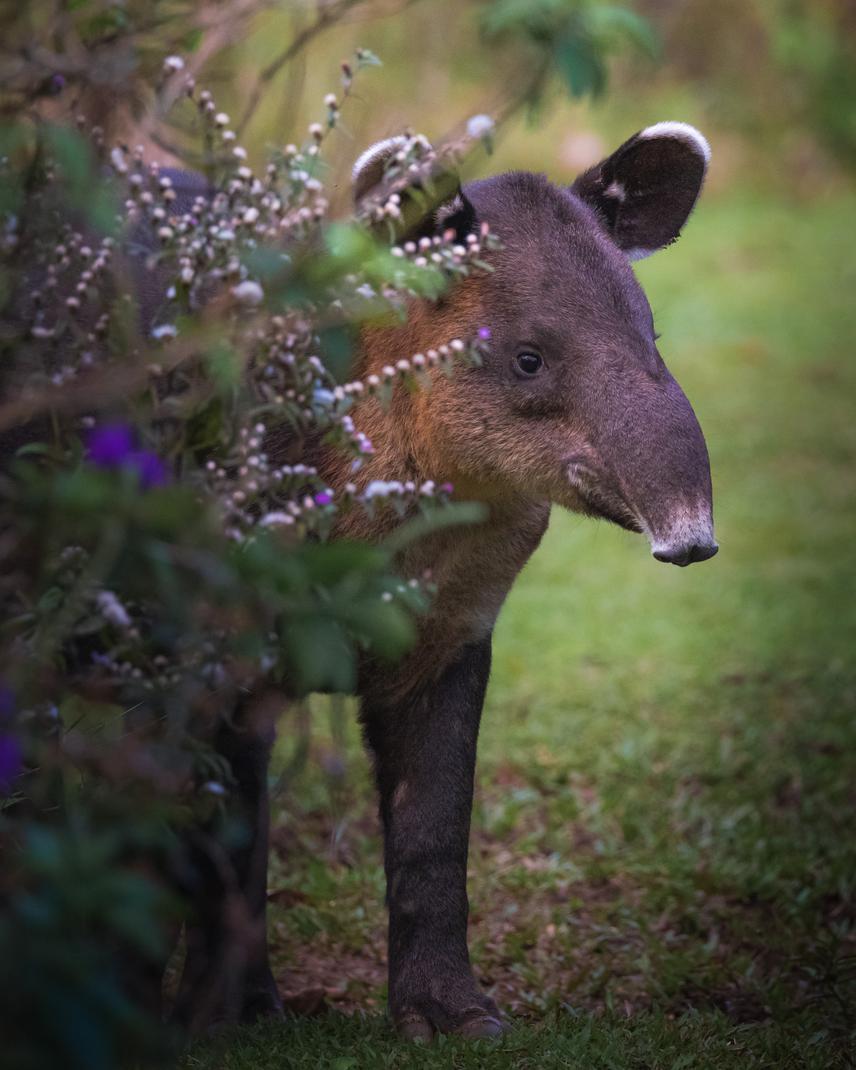Jorge Rojas
Baird’s tapirs remain highly endangered, necessitating multi-factorial and integrative protection: both habitat preservation of protected areas, and protection when they stray outside those boundaries. In the Tenorio-Miravalles Biological Corridor (TMBC), tapirs move between two protected areas, utilizing human-dominated landscapes.

Julián, a juvenile 8 month male tapir, being monitored at Tapir Valley Nature Reserve, at TMBC. Julián is Mamita's calf, one of the radiocollared females by Dr. Jorge and team. © Gabriel Ramírez.
We aim to 1) describe the movement ecology of tapirs that stray outside of protected areas and 2) strengthen human-tapir co-existence, through: a) characterizing human-tapir interactions, b) implementing community-outreach workshops and, c) environmental education with local children. The social—human-tapir interactions and life history research we propose are integral to informing all other aspects, including management and conservation.
Header: Left: Biologist Sofía Pastor-Parajeles (Coexistence Coordinator at Costa Rica Wildlife Foundation -CRWF-), Center: Don Jorge, a local farmer that had a tapir raiding his crop, Right: Dr. Jorge Rojas-Jiménez, (PhD Student at University of Georgia -UGA-; CRWF, Nai Conservation Program Manager, deploying a camera trap in front of the place where an electric fence will be installed around the crop, to monitor tapirs activity at Tenorio-Miravalles Biological Corridor (TMBC). © Michiel Van Noppen.